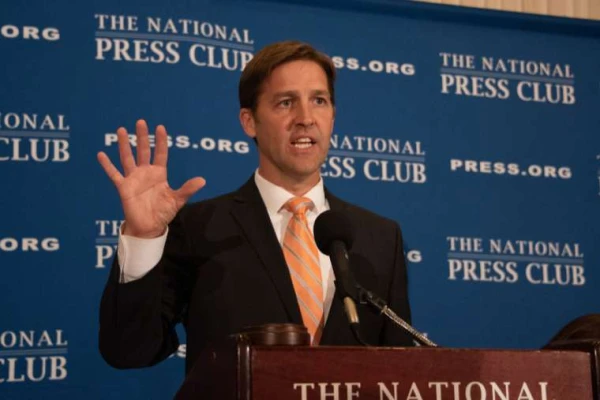
Washington D.C., Jun 13, 2018 / 02:27 pm (CNA/EWTN News).- The American Medical Association voted this week to return to committee a report recommending continued opposition to physician assisted suicide – a move that commentators have called a missed opportunity to stand up for the value of human life.
“For more than two decades the nation’s most prominent and largest association of physicians vocally opposed physician-assisted suicide,” Dr. Peter T. Morrow, M.D., president of the Catholic Medical Association, said June 12. He said the national delegates’ refusal to accept the recommendation was “hugely disappointing and frankly disturbing.”
Morrow said that since the AMA’s founding in 1847, its ethics code has seen physician-assisted suicide as always “fundamentally incompatible with the physician’s role as healer.”
“Our mission at the CMA is to continue to focus on educating our patients on palliative care and hospice and improving access to those much-needed end of life services that include emotional and spiritual support,” he added.
AMA’s House of Delegates, meeting in Chicago June 11, narrowly voted not to accept the report recommending that they continue their stance of opposing physician assisted suicide. About 56 percent of delegates voted for the report to undergo further review. The association has about 240,000 members in the U.S., with membership including medical doctors, doctors of osteopathic medicine, and medical students.
The rejected AMA committee report is the product of two years’ work. It cited concerns that assisted suicide’s use might expand from mentally competent, terminally ill adults to children, people with psychiatric disorders, or people with socioeconomic challenges.
The report backed continued use of the phrase “assisted suicide” rather than in “aid in dying” or “death with dignity.” Justifying this decision, it said “ethical deliberation and debate is best served by using plainly descriptive language.” It added: “despite its negative connotations, the term ‘physician assisted suicide’ describes the practice with the greatest precision.”
Marie T. Hilliard, a nurse who is director of bioethics and public policy at the National Catholic Bioethics Center, said her organization would have preferred the committee report be accepted.
“But the good news is the AMA did not change their position,” she said. “They’re going to study their council’s recommendation for another year. It means we continue to work.”
During the AMA’s debate on the assisted suicide report, its backers said a change in position would go against thousands of years of medicine, including the Hippocratic Oath.
“It’s the antithesis of why you want to become a doctor or a healer,” said delegate Dr. Thomas Sullivan, Massachusetts Medical Society president, according to the Chicago Tribune. Sullivan advocated better palliative and hospice care and better psychological support rather than assisted suicide.
Some delegates said they thought it was important to support members who aid in assisted suicide where it is legal.
Dr. Theodore Mazer, president of the California Medical Association, objected that the guidance puts these physicians “at risk of being in conflict with the (AMA’s) code of medical ethics.”
Physician-assisted suicide is legal by law in the District of Columbia, Washington, Oregon, California, Vermont, and Colorado; and in Montana through a state supreme court ruling. It will become legal in Hawaii next year. A bill to legalize assisted suicide is under consideration in Indiana.
Matt Valliere, executive director of the Patients’ Rights Action Fund, said the AMA vote is “a lost opportunity and a failure to stand against a policy that has grave consequences for everyone, but especially persons living with illness, disabilities, or socio-economic disadvantage.”
“Assisted suicide is not medical care,” Valliere said June 12. He said the vote decision “does not take into account that this bad public policy puts vulnerable patients at high risk for coercion, mistakes and even abuse.”
The AMA’s current guidance describes physician-assisted suicide as “fundamentally incompatible with the physician’s role as healer.” It would be “difficult or impossible to control” and would pose “serious societal risks.”
While it is “understandable, though tragic” that some patients in extreme duress from their suffering may decide that death is preferable to life, “permitting physicians to engage in assisted suicide would ultimately cause more harm than good.”
The guidance says physicians should not abandon a patient once a cure is determined impossible. They must respect patient autonomy, provide good communication and emotional support, and must provide appropriate comfort care and pain control.
Speaking to CNA, Valliere said there could be many reasons why certain delegates didn’t vote to affirm the report.
Like-minded physicians who oppose assisted suicide should join the AMA and become active in their state delegations and work to become delegates, he added.
“They can and should also be discussing with their colleagues the very real dangers that assisted suicide public policy and practice pose,” he said. Many voting delegates come from other areas of medicine with limited involvement with death and dying.
Organizations like the 140,000-member American College of Physicians, the second-largest national physicians’ organization, recently reaffirmed their opposition to assisted suicide.
The decision comes amid a significant increase in suicide in the U.S. On June 7, the Centers for Disease Control and Prevention reported that the suicide rate has risen steadily in almost every U.S. state, and 25 percent nationwide, in the period from 1999 to 2016. Nearly 40,000 Americans died by suicide in 2016, twice the number of homicides that year.
Valliere reflected on the tension behind opposing some suicides and advocating suicide for others.
“When some people get suicide prevention, and others get suicide help based on health or disability status, that’s a clear problem of unequal protection under the law,” he said.
He warned that assisted suicide could undo decades of efforts by disability activists. Many in the disability community, for instance, live “full professional lives,” have children, and are active members of their communities.
“And yet, if they didn’t have a ventilator, they’d be dead,” he said.
The legal definition of “terminal illness” is different than the clinical definition. Some laws such as Oregon’s consider diabetes a qualifying terminal illness for assisted suicide.
“So if someone like my father, who has diabetes and has been on insulin for half his life, could be having a bad year, fall into deep acute depression, and goes off his insulin, they would declare him terminal according to assisted suicide public policy. He would qualify for the law,” warned Valliere.
If you value the news and views Catholic World Report provides, please consider donating to support our efforts. Your contribution will help us continue to make CWR available to all readers worldwide for free, without a subscription. Thank you for your generosity!
Click here for more information on donating to CWR. Click here to sign up for our newsletter.




Assisted suicide did not comply with two premises that influenced the AMA, the Hippocratic oath Do no harm and the Christian legacy that life belongs to God. What changed is the understanding of harm as prolonging suffering and the down spiral of religious conviction. I can speak from my experience as chaplain that assisted suicide is already largely accepted practice though surreptitiously practiced. Documents [charts in the days prior to electronic records now e-files] disappear data not filed silence prevalent prior to JCAHO inspection and review boards. Our culture has diminished the value of life based on quality of life as the measure rather than the inherent value as a rule. Suffering, disease, handicap, mental disorder are categories that fall within that devaluation. Dr. Peter T. Morrow, M.D., president of the Catholic Medical Association knows what he’s up against. A tide of cultural changing opinion that’s bound to affect the AMA’s prev policy on Assisted Suicide. A landmark case worth research in particular written legal opinions is Compassion in Dying v State of Washington 9th Circuit 1994. Example: “In 1990 230 people were euthanized upon request, 400 died of physician assisted suicide, 1000 died from involuntary euthanasia, 8100 as result of deliberate overdose 61% without knowledge or consent” (Justice Robert Beezer in his dissenting opinion). Beezer’s Opinion is a classic of Catholic moral thought and the history of suicide. Catholics remain the minority v this death trend that parallel’s non other than the ‘compassionate’ arguments in The Authorization to End Life Unworthy of Life Karl Binding Adolf Hoche the 1920 medical legal text adapted by Nazi Germany to justify the Holocaust. Obviously we’ve reached a dark turning point in an ever darkening moment of human history.
Addendum to my comment: The 1990 stats were taken by Justice Beezer from a 1991 Dutch Govt report citing abuses of prev legislation permitting physician assisted suicide for competent terminally ill patients in the Remmekink Report.